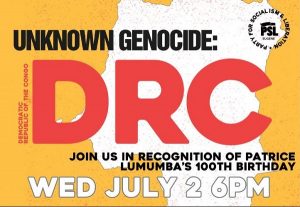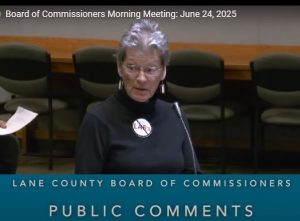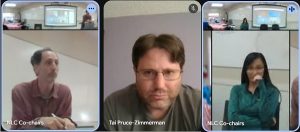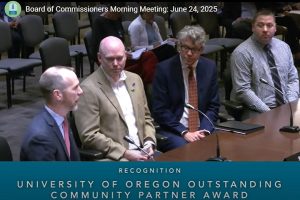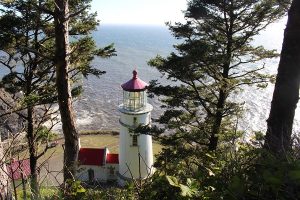‘Protecting Mother Earth’ to discuss possibilities April 14
4 min read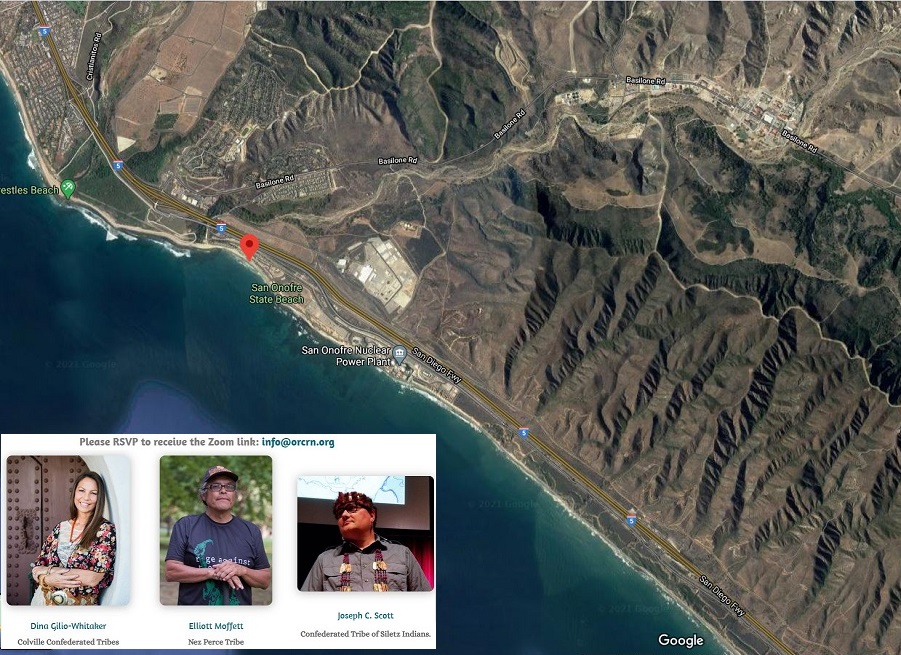
Citizens stopped road construction in Southern California that would have destroyed the 8000-year-old site of Panhe village, long sacred to local Native Americans. Dina Gilio-Whitaker tells the story in her latest book, As Long As Grass Grows.
An Earth Day celebration on April 14 will look at Community Rights and Rights of Nature. Joseph Scott was interviewed by Jenah from the KEPW Youth Radio Project.
Jenah: [00:00:11] The event is called “Protecting Mother Earth: The History, Legacy, and Possibilities as Experienced by Native Americans.” First, I want to thank you for being on our show and invite you to start with the question, How do you help with protecting the planet?
Joseph Scott: [00:00:29] (Introduces himself). I wanted to introduce myself and thank you for having me. I’m a member of the Confederated Tribes of Siletz Indians and my ancestors are the Takelma People of the Rogue Valley.
That’s a hard question. I had to move through a lot of life before I realized that’s that’s just what we do as practitioners of traditional ways. Our lives, our spirits, our everything depends on our connection to and our identity as place. We protect our place by being our place and treating ourselves with the sovereign right to be happy and healthy and pursue our traditional ways of knowing and understanding the world.
Thank you for supporting
local citizen journalism
…I think probably the most important thing is to realize that our history has led us to where we are and will keep us on the path to wherever we’re going. And the, one of the most important things I think for people to really realize, and really internalize, is that we are not a figment, a phenomenon. We’re not a thing from the past. We’re not in museums, we’re all around you. Just because we don’t look like the Indian you may have seen in a textbook doesn’t mean that we aren’t around and aren’t practicing our traditional practices. We’re still very much a part of the world. That’s one of the most important things. I think another thing is to just remember that all of what is now called Western Oregon is still occupied by the bands and tribes, so our history is still here. Our history of removal from our homelands, and a few peoples returned to the homelands, is tragic. And it’s about having everything that you understand and everything that you value taken from you. And it’s a tragedy that we’ve overcome. We’ve been able to survive disease, murder, terrible things, and we’re still here and we still sing our songs and we still dance our dances and we still practice our traditional practices.
We are where we are. We are what—what is where we are is what we are. (laughs) We are the bones of our ancestors, as they say, and, as human beings, we have rights. By way of example, the people of the Columbia have had systematically over time every right to fish taken from them or restricted. And these are violations of treaty rights. So they’re connected. Coastal people are salmon people. The salmon aren’t just a food resource for us. We are related. All of our stories explain how we are related and they are as real as anything else, as real as any scientific analysis or religious explanation of where the world comes from and how it works. And our right as a part of nature to have a positive relationship with our cousins and brothers and sisters, that’s my understanding and my interpretation of the rights of nature is, it’s, you can’t separate us from that.
Dina Gilio-Whitaker: [00:04:16] And this ties into the webinar that we’re going to be giving on April 14th. The Community Environmental Legal Defense Fund, they work around Community Rights and Rights of Nature.
John Quetzalcoatl Murray: [00:04:28] Dina Gilio-Whitaker was interviewed by Jayden of the KEPW Youth Radio Project.
Dina Gilio-Whitaker: [00:04:34] So these are strategies that communities are being taught as ways to protect environments and protect their communities and their lands, different kinds of strategies that people are using. Land trust is one of those tools in the toolbox that people are using to protect lands, especially lands where there are sacred sites and pretty much everything is sacred for native people. Lands that they no longer have control of, though, are often very significant religious and spiritual sites, and our lands that have been abused by settler land management practices. And part of the move to regain access to these lands is about restoring their spiritual connections to the land, but also being able to restore indigenous land management practices in order to, to get them back into health, because that’s what native people did. They manage their lands in ways that kept the lands healthy. So that’s another big part of the conversation, but the Land Back movement is about native people demanding that lands be returned, that, you’ve liked that we not talk about that. That’s been taboo. It’s been taboo in the United States to think about giving all that stolen land back. Like, it’s so taboo! Like you can’t even, it’s unthinkable. But now we’re saying it, we’re thinking it, and we’re saying it, that there has got to be the option for that. And it actually happens, there are numerous examples of the federal government, even in the Trump administration, giving land back to native people. And there are examples of private citizens giving land backs to tribal communities as well. It’s something that you’re going to continue to hear more about.
John Quetzalcoatl Murray: [00:06:27] The Earth Day Webinar, April 14 at 6 p.m. You can sign up at the Oregon Community Rights Network website, https://orcrn.org, or listen at KEPW 97.3 FM.
